What does it mean to invoke metabolism for specifying an ‘urban’ animal and also for engaging urbanicity more broadly? Cities are sites of material densification. They shore up commodities from the world-over and generate effluents that produce new, industrial ecologies. Urban dwelling fosters metabolic proximities that override the assumed detachment marking metropolitan life. Borders quarantining the human from other-than-human worlds become untenable, and a visceral politics of the city fractured along highly uneven social fault lines comes to the fore. The movements of animals, feed and waste stretch cities in all kinds of directions, creating spatial intimacies that are not just in here but out there, calling for attention to processes of urbanization within and beyond the city.
Metabolism, or the ways in which organisms use and convert nutrients from one form to another, is in no way a novel concept. It has different intellectual lineages that have wielded influence in defining processes of urbanization. This brief essay, which is part of a wider research and book project entitled The Metropolis and Metabolic Life, reads two bodies of work in conjunction. The first is urban political ecology (UPE) which, building on Marx’s use of the concept of Stoffwechsel, attends to the circulatory dynamics of urban space and how they are unevenly structured by power relations. The second, more recent body of scholarship, engages with the visceral and biochemical dynamics of metabolism. Steeped in Science and Technology Studies (STS) and anthropology, this work is concerned with the industrialization of metabolism and the consequences it has for the administration and economization of life. Foregrounding corporeality, it attends to acts of ingestion, assimilation and egestion to reorient what constitutes relation, process and event.
There is a tendency in UPE, however, to deploy metabolism as metaphor, partly because the field has been rightly uneasy about the use of a scientific metaphor for all kinds of anti-political urban projects. STS and anthropological accounts on the other hand tend to gravitate towards farms and laboratories. With some exceptions, the politics and production of urban space is rarely a concern. This essay draws from recent ethnographic work on metabolism in the northeast Indian city of Guwahati. Focusing on the circulation of chickens – one of three other-than-human candidates through which the wider project unfolds – within the metropolis and its extensions, the essay seeks to bring political economic and corporeal dimensions of metabolism into conversation. By doing so, it aims to furnish an account of urbanicity open to the actions of a retinue of beings, materials and processes, which are not necessarily given central attention in more established versions of urban theory, but are nonetheless vital for a wider account of the city as a lived achievement.
The remainder of the essay unfolds through three sections. First, it interrogates what an urban animal might mean if one took animals to be metabolic and not just perceiving bodies. Assumed distinctions between body and environment are unsettled, and this has implications for understanding the production of urban space. Second, moving from animal/body to assemblage, the essay foregrounds how metabolic life sutures the city and its economic arrangements. Third, investigating the circulatory dynamics of metabolic bodies, the essay visits questions about grasping processes of urbanization within and beyond the city. Attending to the metabolic, the essay argues, allows for thinking about animal life as an urban question. Metabolism fosters a more nuanced understanding of the spatial and temporal processes constituting urbanicity, and it creates openings for writing cities otherwise.
From perception to metabolism
Over the past two decades there has been a body of scholarship seeking to animate the urban, looking at the built environment from the perspective of animal life. Seminal scholarship aimed to rethink how animals were discursively constituted as a marginal social group, subject to all kinds of inclusion and exclusions from the city. Pushing these insights further, more-than-human geography has attended to beastly presences and their role in configuring the urban fabric. The past decade has witnessed a body of work that extends these formulations to look at animals’ lifeworlds and how they co-compose urbanicity. Moving from the confines of animal geographies to the terrain of urban theory, one impetus of this work has been to reconfigure urban sociality and, therefore, how the very fabric of the city is constituted.
There however is scope for taking this work in newer directions. Much of the writing on urban animal life, or ‘multispecies’ studies for that matter, are predicated upon a model of thought. Even at the cutting-edge of urban theory, there is a tendency to foreground animals’ lifeworlds through their sentient propensities, whether these have to do with vision, olfaction, audition or touch. Such perspectives have recently opened up crucial insights into the plural constitution of urban space, the rhythms of the city, and the material politics of infrastructure. Shifting to the metabolic, however, pushes this creative body of work in newer directions.
Consider chickens people rear within the city of Guwahati. This was fairly common practice, particularly among Muslim and Bodo residents, in erstwhile villages that have now become urbanized. Some continue doing so as a hobby, whilst for others poultry-rearing supplements income and aids social reproduction more broadly. Breeds kept are usually crosses of the White Leghorn and Rhode Island Red, commonly referred to as lukel or local to distinguish them from the industrial broiler. Most of these birds are free-ranging and, in contrast to the broilers, these foraging chickens do not need to be fed.
Following one such bird reveals microspaces of the city: nullahs or drains between dwellings, suddenly opening out into land that has not yet been built upon, where some form of gardening still takes place. Chicken movements reveal how urban ground is fractal: loam and silt mixed with household garbage in one place, compacted earth with pieces of broken concrete from a city under continual construction at another. The birds’ foraging sutures different urban fragments to compose an urban barnyard, one that emerges without a model but also without mere chance (Figure 1).
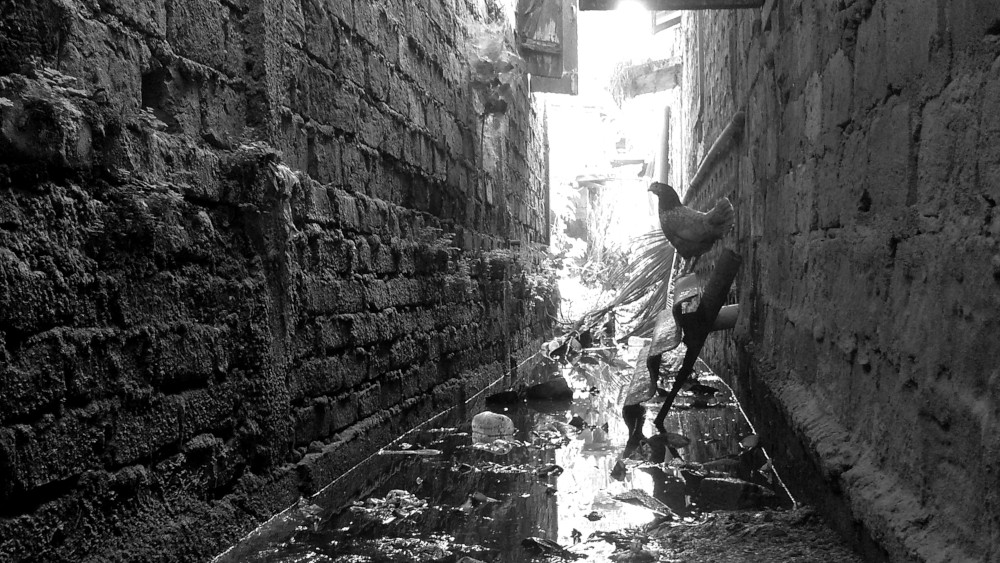
Metabolic dwelling: reconfiguring the city into a barnyard. Photo: Maan Barua, 2022.
Foraging is a metabolic inhabitation of the urban, for it entails an encounter with the world through eating. Not only does the chicken move through the city, but the city also begins to move through the chicken as it begins to ingest its surrounds, whether it is a handful of rice grains that has been strewn on the ground or invertebrates from soil under plastic in a rubbish heap. And via acts of excretion, especially when faeces are used as manure, what was once other-than-human body now becomes plant and, consequently, urban environment. Although this observation might seem trivial, it has implications for how urban space is imagined. A metabolic mode of dwelling, where eating and moving through the city become synonymous, complicates who and what produces urban space. At the same time, it unsettles long-held distinctions between body and environment. A wider salience of this argument is the temporal dimension that metabolism introduces: what we witness is not just where is the urban environment but when. In a similar vein, metabolism prompts asking not only what an urban animal is but when.
From body to assemblage
Engaging bodies metabolically distributes inquiry towards assemblages or the retinue of things, entities, beings and infrastructures that forge urbanicity. There is a tendency in ‘multispecies’ scholarship to focus on dyadic human-animal or human-plant relations, where the urban is not a problematic but simply a container in which these relations play out. Metabolism – including the various alignments between eating bodies – directs analytical and ethnographic endeavour towards a machinic and meshworked version of the city, continually coming into being and generatively incomplete. In fact, some of the early formulations of UPE that viewed cities to be constituted by partial and interconnected metabolisms are particularly illuminating in this regard. Recent scholarship on more-than-human urbanisms is beginning to move in this direction and can be built upon.
Returning to Guwahati, in the Adabari market, rows of shops sell formulated chicken feed, water dispensers, veterinary drugs and day old broiler chicks. Like many other markets in Guwahati, these take on the form of an urban cluster that is combinatorial, with closely linked economic activities. When a handful of shops came up in the area thirty years ago, Adabari was in the city’s outskirts. It was a locality farmers from the rural hinterlands could readily access. The market has become a major poultry hub over time, with erstwhile villagers constructing buildings on their plots of land to create rental space in their plots of land. This is reflective of what others have termed ‘plotting urbanism‘, a process that is piecemeal in fashion and which has no overarching plan.
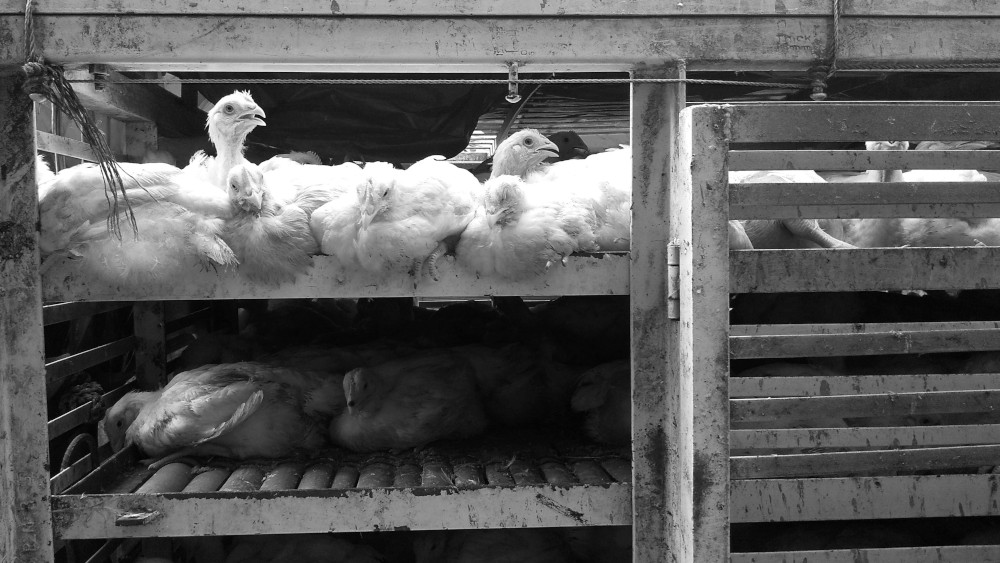
Figure 2. Metabolic circulations: van bringing live broilers to the city. Photo: Maan Barua, 2022.
Through plotting there is an emergence of logistical space and, consequently, a distributed urban metabolism. Adabari is a hub for selling broiler feed formulations, which arrive from mills situated in industrial zones outside Guwahati. Soy and essential amino acids, vital components of poultry feed, are sourced from different parts of the country. Adabari’s outlets not only attract farmers from the urban ‘extensions‘, but also many of Guwahati’s butchers. Contra European cities, the Indian trade in chickens is largely of live birds (Figure 2), which need to be provisioned until they are sold as meat. Butchers nowadays prefer selling broilers over the more expensive lukel birds. Unable to forage, the latter tend to lose weight when kept in cages, resulting in a decline in profit if not sold quickly. Weight loss is more gradual in broilers, largely because of their appetite for formulated feed. Metabolism thus has bearings on market practices and the assemblages it sutures are crucial for understanding the economic arrangements of a city. These assemblages also spur their own set of metabolic ecologies. Rats are a common occurrence in godowns or warehouses where formulated feed is stored (Figure 3). A protein-intensive diet spurs their bodily growth, and rats are becoming a threat to urban chickens.
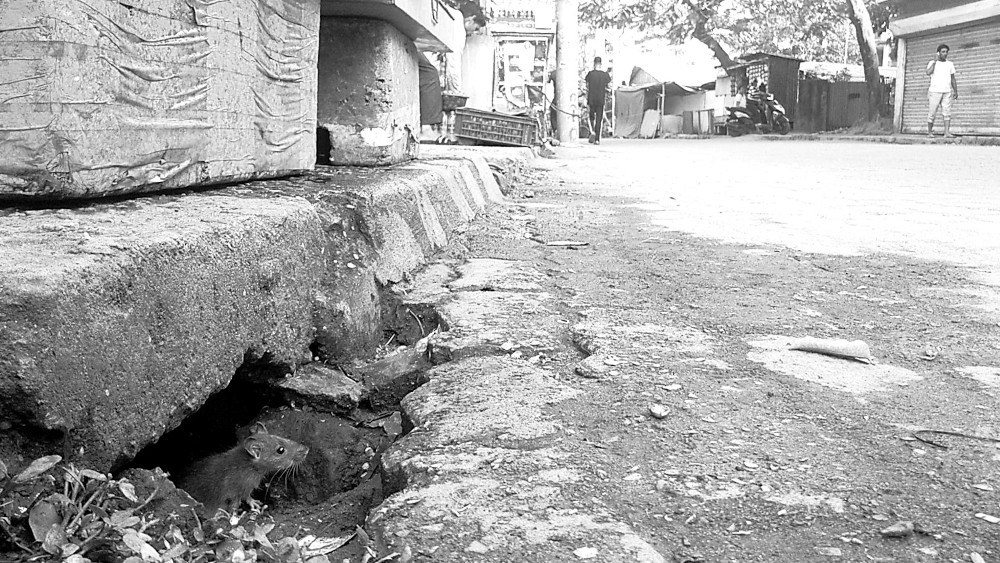
Figure 3. Metabolic ecologies: rats become unintended consumers of formulated feed and spark a whole other set of relations. Photo: Maan Barua, 2022.
A focus on assemblages point to the diverse ways in which metabolism weaves the city and its economic arrangements. Logistics underpinning the broiler trade results in the genesis of urban clusters. Formulated feed circulating through these spaces becomes crucial for what is a trade in live birds. Chicken feed is consumed by rats, which emerge as novel predators and, in turn, become a bane for urban poultry keepers. These kinds intended and unintended alignments between material, body and built form are rarely the centre of attention in more established modes of urban inquiry. Yet they become vital for furnishing richer accounts of the meshworked relations forging urbanicity.
From city to countryside and back
Assemblages also draw attention to the relations between the urban and the rural, the city and its extensions or, what was in an earlier iteration, distinctions between town and country brought about by a metabolic ‘rift’. The term ‘rift’, however, re-imposes a binary between Nature and Society. The term ‘metabolic shift‘ is perhaps more appropriate, for capitalist metabolic production is simultaneously a form of ontological production that transforms natures into ones that are capitalist, and alters rural hinterlands through processes of extensive and extended urbanization.
Metabolism locates urbanization processes beyond the city, but does so in a variegated way and without becoming a ‘methodological globalism‘. Non-capitalist forms of production can coexist with capitalist ones and the agrarian can remain immanent to the urban. Relations between the urban and the rural can be topological rather than unidirectional. Take for instance the pathways of broilers as they move in and out of Guwahati. Eggs from industrial layer farms, many of which are located in south India, arrive by train (Figure 4) and are then transported to commercial hatcheries situated in urban extensions. Hatched chicks are then brought back to the city, to markets like Adabari, where they are sold wholesale. Once again, the birds are shifted to poultry farms in rural areas where they are reared and where they set in motion their own industrial ecologies, including the leaching of phosphate and nitrate into water bodies. Market-ready birds are transported back to the city, where they are sold wholesale. These birds then end up in retail outlets, predominantly butchers, but also restaurants and the city’s numerous street food vendors.
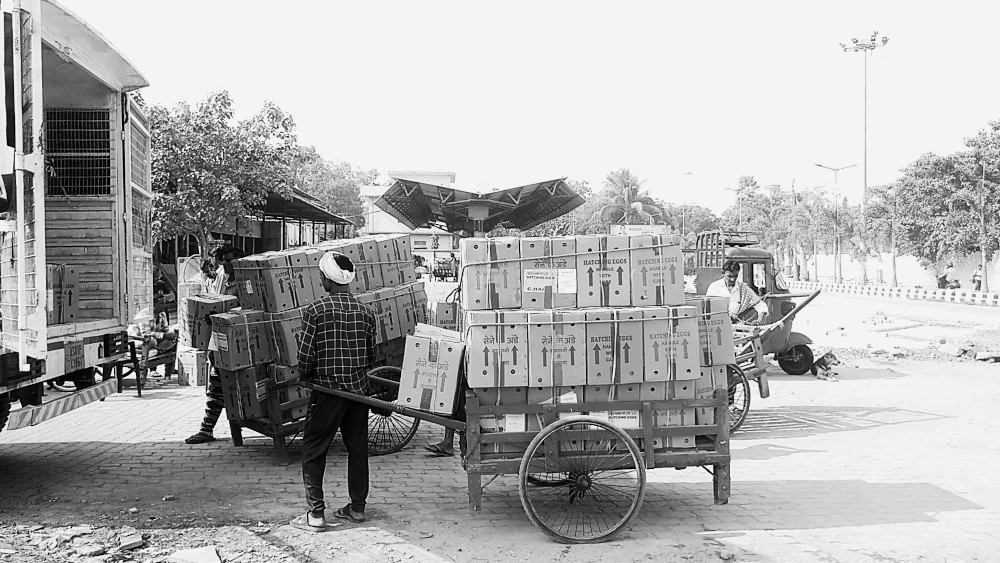
Following the urban topologically: eggs arriving in the Guwahati railway station. Photo: Maan Barua, 2022.
This incessant traffic between the city and countryside does not stop here. Offal from butchers’ shops – body parts that were once chicken – is collected at night via arrangements that form an informal circular economy. It makes its way to fisheries in Jagiroad, a town not far from Guwahati, where offal is offered as feed for carnivorous fish. Jagiroad’s landscape is in fact undergoing a drastic alteration, with erstwhile paddy fields almost entirely replaced by tanks for the intensive rearing of fish (Figure 5). An industrialization of metabolism and a transformation of the city’s rural hinterlands go hand-in-hand. Through practices feeding forward, chicken become part of the bodies of fish. In other words, the insides of a living commodity slaughtered in the city become the flesh of yet another in the urban extensions. These proximities across spaces and across bodies show how the rural and the urban are continually folded into one another and they generate much-needed conversations between STS’ emphasis on corporeality and the body and UPE’s focus on the circulatory dynamics of space.
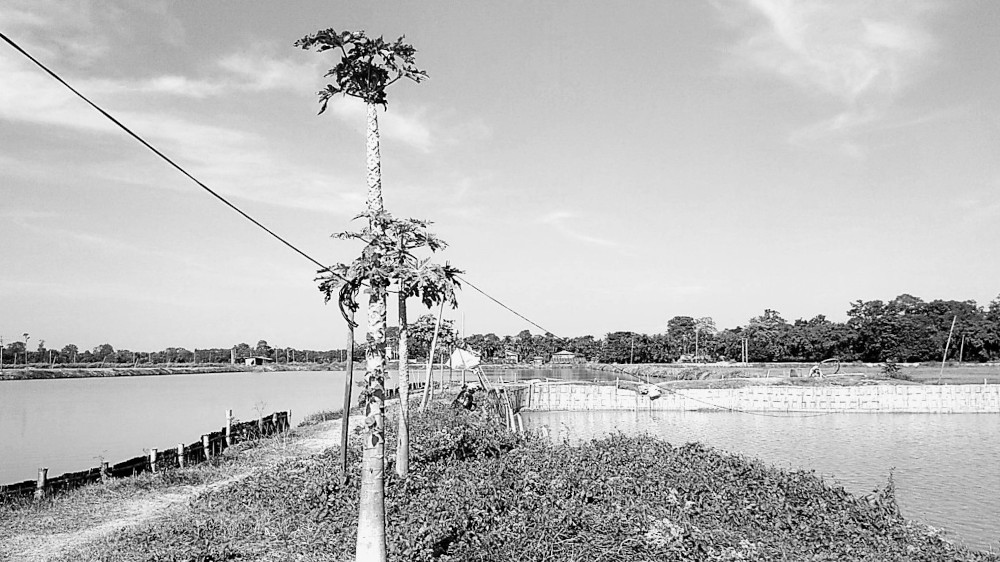
Former paddy fields replaced by fisheries: Jagiroad. Photo: Maan Barua, 2022.
Conclusions
Metabolism, and critical geographies of the metabolic, take animal geographies and ‘multispecies’ studies in very different directions. They prompt rethinking relations between bodies and urban environments. Metabolism shifts the focus from a bounded subject – whether human or other-than-human – to one that is distributed, but without necessarily dissolving the body or losing sight of what it can do. Similarly, analytical and ethnographic inquiry is redirected to a wider assemblage – the feed given to a particular being, the transformations that happen in and to a body, the logistics that subtend life, the spillovers and new relations between eating bodies. In many ways, a geography of the metabolic harks back to initial formulations of the ‘more-than-human’ in geography and its calls for rethinking spaces of motion, relation and embodiment. At the same time, it remains close to the analytical insights of UPE, notably its emphasis on capitalist urbanization, but without surrendering everything to a unitary logic of capital. With urban poultry-keeping, we see how the agrarian basis of the city is never put to a full erasure and neither does it wither away with capitalist urbanization.
Metabolism prompts looking at the city at a number of different scales, whether these are urban fragments or the iterative pathways that shuttle between the city and its extensions. Urban metabolism is often underlined by marginalized communities, and it is vital to not lose sight of asymmetric social relations when focusing on the metabolic. The larger book project on cities and metabolic life that this essay is part of seeks to bend the canon and to write cities in a register that is not commonplace in urban theory. As shown in this essay, and speaking to this IJURR Spotlight’s theme, such an endeavour allows engaging with animal life as an urban question. Looking at the urban via the metabolic takes other-than-human life to be constitutive, recasting the city as a lived achievement composed by relations of ingestion and egestion, assimilation and breakdown. Such relations cross a porous entourage of beings, things, infrastructures and entities. Conversely, the urban is a generative ground for critically reorienting understandings of metabolism. It furnishes opportunities for looking at a complex suite of phenomena and processes beyond the siloes of farms and laboratories where much of the new thinking of metabolism is invested. Metabolism opens up other ways to be urban and by doing so creates possibilities for a different articulation of urban worlds.
Maan Barua works on the politics, economies and ontologies of the living and material world. He is the author of Lively Cities: Reconfiguring Urban Ecology published by the University of Minnesota Press (2023) and is based at the University of Cambridge.
All essays on Animals and the City
Introduction: Animals and the City
Rivke Jaffe
On More-than-human Public Space: Kabootar Chowk in Karachi
Aseela Haque
Affective Geographies: Managing Feral Cat Colonies in Rome
Giovanna Capponi
Urban Animals: Bison on Display, and the Grand Temporal and Geographic Scales of Urbanization
Dawn Biehler
The Metropolis and Metabolic Life
Maan Barua
Zoonotic Urbanization
Matthew Gandy
Cats, Commensal Rodents and Cosmopolitics in Cape Town
Nicoli Nattrass & Zoë Woodgate
Related IJURR articles on Animals and the City
Weeds, Pheasants and Wild Dogs: Resituating the Ecological Paradigm in Postindustrial Detroit Paul Draus and Juliette Roddy
The Zoonotic City: Urban Political Ecology and the Pandemic Imaginary Matthew Gandy
Rethinking Urban Epidemiology: Natures, Networks and Materialities Meike Wolf
Of Holy Cows and Unholy Politics: Dalits, Annihilation and More-than-Human Urban Abolition Ecologies Rajyashree N. Reddy
